The global ecommerce apparel market has exploded over the past five years. According to Statista, global fashion ecommerce was valued at $781.5 billion in 2024 and is expected to reach $1.6 trillion by 2030.
But, while brands have excellent potential for growth and profit, apparel fulfillment poses some unique challenges that can inhibit success. Retailers must stay agile, addressing challenges and navigating emerging complexities to compete in a saturated market.
You see, it’s not just about being a great brand with great products anymore—it’s about providing outstanding customer experiences that encourage loyalty.
Apparel order fulfillment is a large part of that, from inventory management to delivery timelines and returns, which is why your fulfillment strategy and partner are critical.
Common apparel order fulfillment challenges
It’s rare to see an apparel company with one product. And even if there were only one, it would likely need availability in different sizes.
To put things in perspective, there was an average of 6,000 SKUs for online apparel and accessories shops in 2022. This leads to a unique set of challenges for apparel brands, including:
- Inventory complexity: Brands and fulfillment partners must create a seamless strategy to handle various sizes, colors, and styles. Without the right experience or plan, it’s easy to end up with stockouts or overstock.
- Order accuracy: A high volume of SKUs can quickly lead to order fulfillment errors. Without the right systems, partners, or a clear strategy in place, inaccurate picking, packing, and shipping can occur. The more mis-ships, the more dissatisfied customers and returns.
Returns Management: Coresight Research estimates that the average return rate for online apparel in the U.S. is 24.4%, higher than many categories. Apparel brands must address the fulfillment challenge returns create to reduce processing costs while strategizing ways to minimize returns. - Seasonality and Trends: Trends and seasonality in fashion and apparel make it a challenge to maintain optimal inventory levels. An item may do well one year and become obsolete the next. While some apparel brands can lean on the season, it’s not always guaranteed, making demand forecasting more difficult.
- Packaging Needs: Packaging is a balancing act. Brands need to be cost-effective while protecting products, reducing waste, and creating a great brand experience.
- Global Shipping Logistics: Global shipping can create complexities in apparel order fulfillment. Along with the need for a competitive delivery timeline, brands must take cross-border regulations, customer requirements, and visibility and tracking into account.
Ways to optimize apparel fulfillment
The key to optimizing apparel order fulfillment is being proactive and looking at challenges while implementing the tools to overcome them. For example, a brand looking to improve order picking and accuracy can implement barcode scanning and RFID technology.
Not sure where to start? We’ve got you covered with key strategies to optimize apparel fulfillment operations.
Inventory management
Although excess inventory is not always a bad thing, it’s better to have the right amount of inventory on hand so that it’s cost-effective for brands and meets customer demand. This means preventing stockouts and, for the most part, avoiding overstocking.
To optimize apparel order fulfillment through good inventory management, make sure to have real-time inventory tracking and use predictive analytics for better demand forecasting. You can also set up automated reorder systems. Because many of today’s retailers require omnichannel fulfillment operations, technology and automation are important tools.
Technology use
Technology has the power to facilitate speedy apparel order fulfillment while improving accuracy. Operations are improved through automated sorting systems, RFID, barcode scanners, and modern order management system (OMS) software to help streamline workflows. The key is working with a partner or self-fulfilling in a way that doesn’t shy away from tech–and ensuring you are using the right tech stack for your unique operations.
It’s imperative that your 3PL has fulfillment technology that enables real-time visibility of your orders and inventory, so you can control your operation no matter where you are. Even better? Look for tech with automated features like recurring reports, rules-based fulfillment, and shipping rate selection.
The Kase fulfillment technology automations feature enables brands to:
- Bulk edit orders to change shipping methods
- Route orders to warehouses based on stock levels
- Add gifts to orders with certain SKUs
- Create recurring real-time inventory and order reports
- Select certain carriers based on shipping parameters
Flexible fulfillment networks
Speed and efficiency are the goals for many apparel brands, and flexible fulfillment networks help make it happen. Partnering with 3PLs with distributed fulfillment centers near key markets reduces shipping times, while integrating DTC and B2B fulfillment under one umbrella smooths operations by minimizing disruption. Flexible fulfillment networks are also more adaptable to changing demands, providing a better foundation to pivot when needed.
Handling returns and reverse logistics
More than a few guides have been written on how to improve returns management. It all comes down to implementing an efficient returns process (with clear instructions and easy-to-follow steps) while having strong logistics partners that handle and process your returns swiftly.
Apparel order fulfillment partner must-haves
For many apparel brands, fulfillment operations are only as good as their logistics partners. This means choosing a 3PL provider with the right services, skills, and tools for optimizing your order fulfillment. As an apparel retailer, look out for these must-haves:
- Scalability: The ability to scale and adapt during peak periods, seasonal fluctuations, and periods of growth.
- Technology integration: Modern technology that seamlessly integrates with ecommerce platforms, inventory, order, and warehouse management systems, and that can provide customer data to further fine-tune and improve your operations.
- Customer and client support: Available services to handle queries about order status, returns, and exchange processes. In other words, transparency, timely resolution, and a willingness to go the extra mile to satisfy and delight customers.
- Real-time tracking: Access up-to-the-minute order tracking and inventory updates.
- Returns management: A smooth reverse logistics process that manages high apparel return rates and facilitates speedy restocking.
- Packaging solutions: Supports cost-effective, branded packaging that protects products and boosts the customer experience.
- Industry and omnichannel expertise: Expertise in apparel order fulfillment across channels (including retail compliance) and the know-how to handle high SKU counts, diverse sizes, colors, and styles. Plus, demonstrated inventory management with real-time tracking and automated reorder systems.
Kase Study: How Malbon Golf Optimized Apparel Fulfillment
Malbon, a rapidly growing golf lifestyle brand, faced the challenge of keeping up with its explosive growth and increasing order volume. Initially handling fulfillment in-house, the brand quickly realized that it needed a more scalable solution to support its expanding retail and online channels.
By partnering with Kase, Malbon saw a significant boost in efficiency, including scaling a 1400% increase in monthly order volume and 99% next-day shipping for all customers. Kase’s seamless integration with Shopify, real-time order visibility, and advanced technology helped Malbon manage operations smoothly as it navigated rapid growth and international expansion to over 75 countries.
“Kase has been a great partner. They’ve supported our brand from the startup days to the high-growth mode that we’re in right now,” says Bryant Knight, COO of Malbon. “Our Director of Operations and customer service team work directly with the Kase team. All of our departments are tightly linked, and we’re constantly working on optimizing our operation to meet our growing demand.”
With Kase’s expertise, Malbon streamlined its operations, improving inventory accuracy and creating a returns process that integrated directly with Loop Returns for a better customer experience.
This dynamic partnership allowed Malbon to scale effortlessly, from its California-based fulfillment center to global shipping networks, all while maintaining high customer satisfaction.

Read the full case study here.
Is your apparel fulfillment ready for the next level? Reach out to our 3PL experts today and optimize your operations for stronger growth and higher customer satisfaction.





